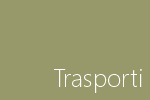Guidance to assess the risks to bees from the use of biocides
| ID 21360 | | Visite: 413 | Documenti Chemicals ECHA | Permalink: https://www.certifico.com/id/21360 |
Guidance to assess the risks to bees from the use of biocides (02/2024)
ID 21360 | 14.02.2024
This Guidance provides technical advice on how to perform the hazard and exposure assessment and risk characterisation for biocidal active substances and biocidal products with respect to assessment of risks to bees from the use of biocides.
In December 2019, ECHA received a mandate from the European Commission to develop guidance for assessing the risk to pollinators (including bees) from the exposure to biocides. According to the mandate, ECHA should take into account the revised EFSA Guidance document on the risk assessment of plant protection products on bees, which was published in May 2023.
The mandate also stated that the ECHA Guidance on pollinators should specify the information required to enable a conclusion by the evaluating authority on whether the biocidal product complies with the criteria under BPR Article 19(1)(b)(iv) concerning bees and other arthropod pollinators. However, due to the current lack of data on non-bee pollinators, this guidance document only covers the risk assessment to bees from the use of biocides.
ECHA has developed this guidance document together with a group of experts from different Member States, as well as with the support from stakeholder organizations.
This guidance document provides a methodology to assess the risk to honey bees that are exposed to biocides. This is done by following a tiered approach for the exposure and the effect assessment. In the risk assessment of honey bees, the magnitude dimension of the Specific Protection Goals (SPGs) is applied as a threshold for acceptable effects. In regard to bumble bees and solitary bees, a risk assessment methodology is provided but the magnitude dimension of the SPG is not defined due to current lack of knowledge.
This guidance considers two main routes of exposure to bees, via intake of contaminated pollen and nectar through the diet, and via contact, when the bees come to physical contact with the biocidal product.
In the risk assessment, a tiered approach is applied both for exposure and effect assessments, i.e., an exposure-Tier and an effect-Tier have been defined. In the exposure tiers, residue intake or residue deposition need to be quantified by calculating the Predicted Exposure Quantity (PEQ) to address the dietary and the contact exposure of the bees from the use of a biocide through the different routes of exposure. In the effect tiers, the imposed exposure is called ‘Dose’ in the laboratory tests or ‘Estimated Exposure Dose’ in the higher tier tests.
The routes of exposure to bees for both exposure and effect assessments are approached considering both acute and chronic effects, and adults and larvae as different life-stages. Thereby, four risk cases have been defined: acute-contact; acute-dietary; chronic-dietary; larvae-dietary. For each of these risk cases, a PEQj is derived in the exposure estimation with suffix j indicating the specific risk case.
The guidance proposes a risk assessment approach to assess the risk to bees from product type (PT) 18 (insecticides, acaricides and products to control other arthropods) emission scenarios. The possible sources of exposure covered in the guidance are application of manure/sludge from animal housing, spraying on walls and foundation of buildings, irrigation of private gardens with treated water, and large scale spraying of trees, bushes or natural water bodies. Bee exposure through direct consumption of bait products is not considered in this guidance. Also, for spot applications by spraying, no quantitative risk assessment is required.The focus of the guidance is on PT18 uses. However, a risk assessment may be required for a biocidal product under a PT other than PT18 when the potential exposure to bees is considered significant enough to warrant further consideration and if the product contains an active substance with an insecticidal mode of action.
In the effects assessment, the lower tier assessment will define dose response curves (DRC), which are parameters to describe the steepness of the dose-response relationship obtained from the standard laboratory test.
As part of the effect assessment, this guidance document includes two additional aspects for honey bees: considering and assessing whether the concerned compound presents increasing toxic effects due to long-term exposure to low doses – Time Reinforced Toxicity (TRT) and potential concerns due to sublethal effects.
The guidance also provides advice for higher tier effect assessment as a potential way for refinement, in case unacceptable effects are observed in the lower tier assessment. Furthermore, a risk assessment scheme for metabolites and biocidal products (mixtures), and considerations of risk mitigation measures, and instructions for use are included in the document.
This guidance document for the risk assessment of bees from the use of biocides is developed by taking into account the existing guidance available by EFSA for the risk assessment of plant protection products. For further information on the detailed aspect of the risk assessment methodology as well as the scientific background information, the reader is referred to the EFSA guidance (Revised guidance on the risk assessment of plant protection products on bees (Apis mellifera, Bombus spp. and solitary bees)) and its supplementary documents.
...
Fonte: ECHA
Collegati














































